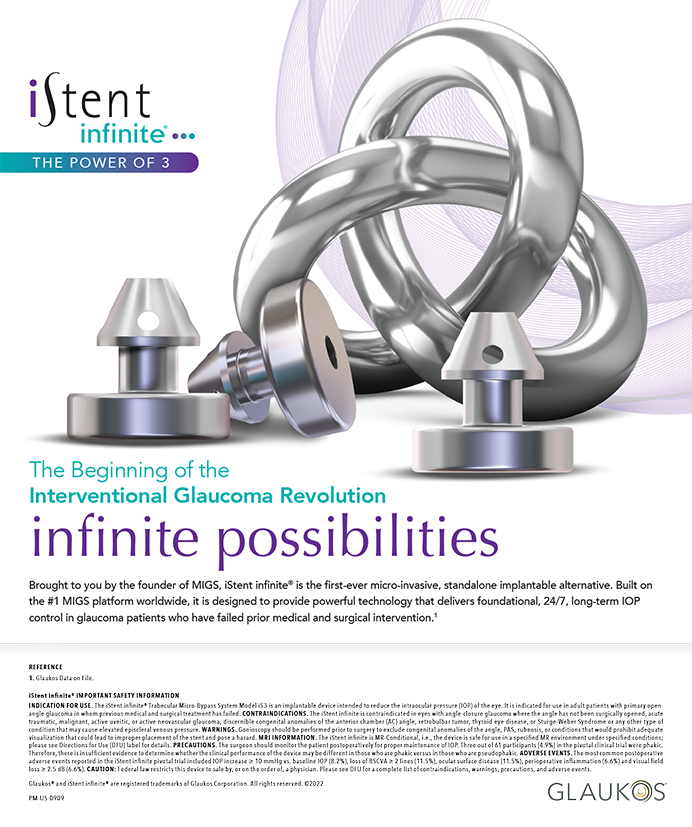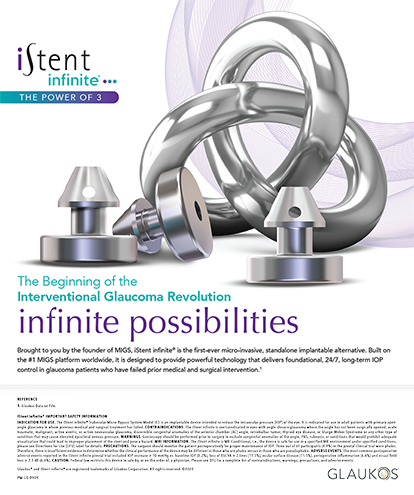Innovations aimed at improving efficiency and increasing the quality of care for patients drive many fields in medicine, perhaps none to a greater degree than eye care. Many ophthalmologists are attracted to the specialty for this very reason. Although technological advances may be appealing, the coding and reimbursement system surrounding them can be convoluted and difficult to comprehend. This bureaucracy can have the unfortunate effect of discouraging ophthalmologists and the surgery centers where they operate from trying a new product, even if it could be of benefit to their patients. Indeed, several novel approaches to ophthalmic drug delivery are currently available for use under pass-through status yet remain untried in many practices.
AT A GLANCE
- Transitional pass-through status is intended to encourage the use of newly FDA-approved medical devices, drugs, and biologics across all fields of medicine and to boost Medicare patients’ access to these innovative therapies by temporarily paying more than established facility fees.
- Each year, CMS estimates how much Medicare will spend on transitional pass-through devices, drugs, and biologics in the coming year and sets aside that amount to cover payments through the year.
In this article, my goal is to demystify how pass-through payments work and explain the benefits that they offer in hopes of increasing patient access to innovative therapies.
WHY CONGRESS ACTED
Transitional pass-through status has been in place since early 2000. The Social Security Act 1833(t)(6) specified that transitional pass-through payments would be “provided for certain new drugs, devices and biological agents that were not paid for as a hospital outpatient department service, and whose cost is ‘not insignificant’ in relation to the payment for the procedures or services associated with it.”
The provision is intended to encourage the use of newly FDA-approved medical devices, drugs, and biologics across all fields of medicine and to boost Medicare patients’ access to these innovative therapies by temporarily paying more than established facility fees. CMS establishes the initial payment for the new device or drug based on a complex formula, which establishes a floor price above which the product must be priced. Reimbursement is then based on this price. For example, for pharmaceuticals that have pass-through status, payment is made at wholesale acquisition cost plus 6%, which essentially equals average sales price plus 6%, until pass-through status expires.
Each year, CMS estimates how much Medicare will spend on transitional pass-through devices, drugs, and biologics in the coming year and sets aside that amount to cover payments through the year. In other words, the money is allocated up front, and the question is then whether physicians, ambulatory surgery centers (ASCs), and hospital outpatient departments will find value in using the products designated for these pass-through payments.
A key point to understand is that pass-through payments have no direct effect on physicians’ fees, which are determined on a separate basis under Medicare’s Physician Fee Schedule without reference to payments made to hospitals or ASCs. There has been recent question as to whether large-volume practices may be slightly affected by CMS’s Merit-based Incentive Payment System (MIPS) in relation to pass-through medications used during surgery. However, this would have the exact opposite effect that CMS intended with the creation of pass-through status, and I expect will likely be exempt from MIPS calculations in the near future. The designated budget for pass-through payments is set aside by CMS a year in advance, and it comes from a modest adjustment to all Medicare payments for hospital outpatient department and ASC services. (From 2005 to 2015, this adjustment ranged from 0.02% to 0.22% to cover all pass-through technologies.1)
Pass-through status is conferred for at least 2 years but typically not longer than 3 years. This gives physicians time to learn about covered products and their real-world performance. Additionally, CMS collects utilization data during this period, and the agency employs this information when determining how to adjust the payment rate for the service using the product after transitional pass-through status expires. Product utilization during this time is therefore crucial to provide sufficient claims data for CMS to make an accurate accommodation into facility payments in the future.
THE PROVISION IN PRACTICE
When CMS confers pass-through status on a product, the agency assigns it a unique Health Care Common Procedure Coding System (HCPCS) code that facilities must use during billing in order to receive reimbursement. Education of staff regarding proper coding and billing of pass-through medications and devices is therefore key to ensuring patient access to these new technologies.
For pass-through products used in a hospital setting, CMS reimburses 100% of the cost for Medicare Part B patients, and no copayment applies. When a pass-through drug or device is used in an ASC, however, the statutory 20% copayment does apply, although it is typically covered by a patient’s supplemental insurance. For patients covered by a Medicare Advantage or other commercial insurance plan, coverage and payment vary, and it is best to check with the individual carrier for guidance.
CONCLUSION
The bucket of money, so to speak, that CMS sets aside to cover transitional pass-through payments for the year is for designated FDA-approved pharmaceuticals, devices, and biologics in all medical specialties. The formulas for reimbursement and incorporation of these innovative new products are not without their critics, but it is part of the system in which health care providers currently operate. If a high volume of cardiologists takes advantage of this provision but only a small number of eye surgeons do, that may inadvertently limit the innovations that come to market to benefit ophthalmic patients.
Pass-Through Status in Ophthalmology
Several ophthalmic products currently have or are expected soon to receive pass-through status:
- Omidria. For the first time in relation to a new drug, CMS extended pass-through status for this product after it had expired. Pass-through status for Omidria (phenylephrine 1% and ketorolac 0.3% injection, Omeros) has now been extended through October 1, 2020 (HCPCS code: C9447).
- Dexycu. CMS conferred pass-through status on Dexycu (dexamethasone intraocular suspension 9%, EyePoint Pharmaceuticals) and assigned the product a HCPCS code (J1095) that went into effect in October 2018. The product entered the US market in March.
- Dextenza. CMS approved transitional pass-through payment status for Dextenza (dexymethasone ophthalmic insert 0.4 mg, Ocular Therapeutix) and assigned a HSPCS code (C9048) that will become effective July 1. CMS has included Dextenza on its list of products preliminarily recommended for a dedicated HCPSC J-code, which would become effective January 1, if approved.
Among products for which pass-through status has expired is Mitosol (mitomycin 0.2 mg, Mobius Therapeutics).
Understanding how transitional pass-through payments work can give ophthalmologists the confidence to try new products, enable them to explain to reluctant administrators why use of these therapies will not negatively affect their facility reimbursements, and boost patient access to the latest treatments. Moreover, it can be argued that using therapies while they have pass-through status and properly coding for them encourages companies to invest in research and development. Ultimately, embracing technological advances created to improve patient care will drive further innovations in ophthalmology to the benefit of patients.
1. Gustafson TA. Transitional pass-through payments. ASC Focus. September 2015. http://www.omidria.com/wp-content/uploads/ASC-Focus-Reprint-Sept2015-Gustafson.pdf. Accessed April 29, 2019.





